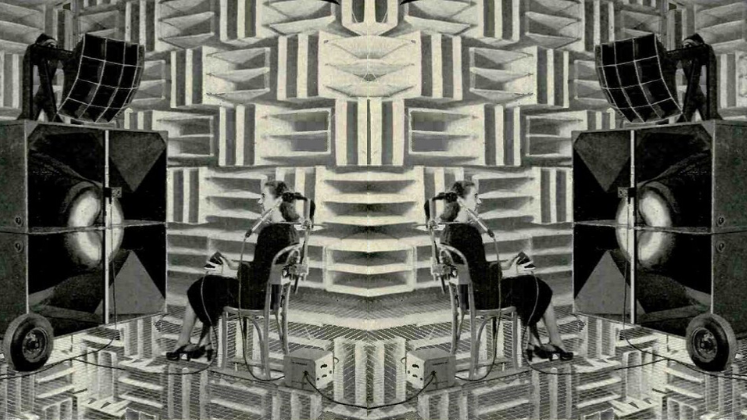In this post David Beer reflects on what the attention given to bookcases during the COVID-19 pandemic reveals about our enduring attachments to particular surfaces, spaces and presences and their role in the materiality of research, writing and teaching.
This post, originally published in the author’s ‘Fragments of Modernity’ newsletter, and appeared on the LSE Review of Book’s Materiality of Research series.
Solitude-networking is throwing up lots of new visual cues, especially as we see inside people’s homes. The now prominent genre of home-located-video-link-interview content has brought the bookcase some detailed attention. Situated in the background, the bookcase has become the mise-en-scene of the political classes (and academics and celebrities too). The book backdrop is both a handy representation of symbolic knowledge, a marker of cultural cachet and a source of analysis for those seeking to understand the particular individual who occupies the foreground. The canvas upon which media pronouncements are made and the source of debate and mockery on social media, the bookcase has found its place in the remote dialogues and two-dimensional interactions of social distancing.
Professor Robert Dingwall, featured on the popular twitter account Bookcase Credibility
I’d probably aim for the same type of scenery, if I could. My video calls are backed by a blank wall. This is no proclamation and nor is it a choice. It is by no means an attempt to subvert or make a statement on the selfconsciously-situated bookcase. I have only a small number at home: my book collection is almost entirely housed in my work office. Locked in. Limited space at home and an attempt to demarcate home and work space have kept me in the habit of only bringing a book or two home at any one time. My book collection exists only at work – a space that I imagined would always be accessible. Those many images of crammed shelves remind me of my books.
As I think about my motionless books resting in my office, I’m reminded of our sudden lurch toward heightened immateriality and I wonder which aspects of our previous materiality will be preserved, possible or held on to
I sometimes, in the moments of daydreaming, imagine my office. Empty and dark. The walls lined with my books. The tools of the trade, left unused. It’s a small and inconsequential problem, but it does make me think of how work has been transformed now and possibly in the future.
It’s limiting without them – and not just because I lack a visual representation of my cultural capital to adorn my moments of remote social contact. Planning a lecture, doing some writing, checking and cross-checking some idea. I wrote before about the difficulty of writing at the moment; as the focus starts to return, steadily, I’m now seeing the separation from my books will make things difficult (and that’s without even beginning to contemplate libraries staying shut).
Research, writing and teaching have a materiality to them. There are surfaces, spaces and presences that can’t be replicated online and which are vital in creating and communicating ideas and knowledge. Much of this work has already partially adapted over the years, with ebooks, recorded lectures, podcasts, PDFs, online meetings and the like. More adaptation is happening now, rapidly. But not everything can be replicated or replaced. As I think about my motionless books resting in my office, I’m reminded of our sudden lurch toward heightened immateriality and I wonder which aspects of our previous materiality will be preserved, possible or held on to.
The shelved volumes aren’t just functional; I have an attachment to those books as well. They are comforting somehow. I know their content is there for me to call upon if I need it. Their presence on my shelves also acts as a reminder of what I might hope to aim for, a little reminder of one possible endpoint for writing work.
Being separated from a book collection is not important, but as that image of my shut-down office and lonely books flicks across my mind, it makes me wonder about the many ways that writing, research and teaching will change over the coming months and maybe even years. A new materiality of knowledge-making and sharing is likely to emerge.
Note: This article gives the views of the author, and not the position of the LSE Impact Blog, nor of the London School of Economics. Please review our comments policy if you have any concerns on posting a comment below
Featured Image Credit: Book shelf of the author.










You’re very fortunate. I now live in a netherworld as an academic who has been moved from an office with shelving first to open plan with space on the desk on which to pile books (and paper) – although there were the Health & Safety people who kept insisting that it was (a) dangerous as they would leap off and crush people and (b) bad for (other) people’s mental health having so much disorder around, and then to a quarter circle of a desk with three others and no room to put anything on. Many of my books and papers are in a storeroom at work as I don’t have room home to inflict more on my wife. No I’m being told that the store at work will have to be cleared out because of Health and safety concerns (does make me wonder whether the store will have an existential crisis as a result).
When first moved to open plan, one manager emailed to say I (and others affected) were being allocated a maximum of 600 cm of shelf space. Not really enough for a copy of my own publications let alone the other tools of the trade. Another manager told us they didn’t want to hear any nonsense about losing ones academic identity.
Resist the evils of open-plan!